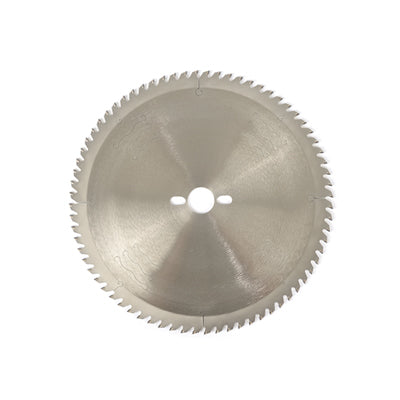
Carbide vs. Diamond Tipped Saw Blades: which is right for you?
Share
Confused about carbide and diamond tipped saw blades? Learn the key differences between these two types of blades
When it comes to cutting through tough materials, both carbide and diamond tipped saw blades are popular choices. While they may seem similar, there are significant differences between the two that can impact your choice. Let's break down the key characteristics of each.
Carbide Tipped Saw Blades
Carbide tipped saw blades feature tiny, incredibly hard carbide teeth brazed onto a steel body. This combination offers exceptional durability, heat resistance, and cutting performance, making them ideal for a wide range of materials, including wood, metal, plastics and composites.

Key features of carbide tipped saw blades
- Versatility: suitable for a wide range of materials.
- Durability: can withstand high temperatures and heavy use.
- Cost-effective: generally, more affordable than diamond tipped blades.
- Best for: general-purpose cutting, woodworking, and metalworking.
Diamond Tipped Saw Blades
Diamond tipped saw blades, on the other hand, have tiny diamond particles embedded in the blade's surface. Diamonds are one of the hardest substances on Earth, making these blades incredibly durable and capable of cutting through extremely hard materials.

Key features of diamond tipped saw blades
- Hardness: Ideal for cutting extremely hard materials like concrete, stone, tile and hard woods.
- Precision: Can produce very clean and accurate cuts.
- Longevity: Lasts 30 longer than carbide tipped blades if used correctly
- Best for: Masonry, tile, hard woods and other hard materials.
Choosing the right Blade
When selecting between carbide and diamond tipped saw blades, consider the following factors:
- Material to cut: If you're working with a material like wood, you can use either a carbide-tipped blade or a diamond-tipped blade. However, for extremely hard materials such as concrete or granite, a diamond-tipped blade is essential. While for metal you need to use a blade with a carbide tip.
- Desired finish: diamond tipped blades typically produce a cleaner and more precise cut.
- Frequency of use: if you only occasionally need to cut hard materials, a diamond tipped blade may not be cost-effective.
Both carbide and diamond tipped saw blades have their own unique advantages and are best suited for different applications. By understanding the key differences between the two, you can make an informed decision and choose the right blade for your specific project.
If you still need advice about it, don't worry, that's what we're here for! Write to us via email to info@woodtoolingshop.com or look for us on social media!
